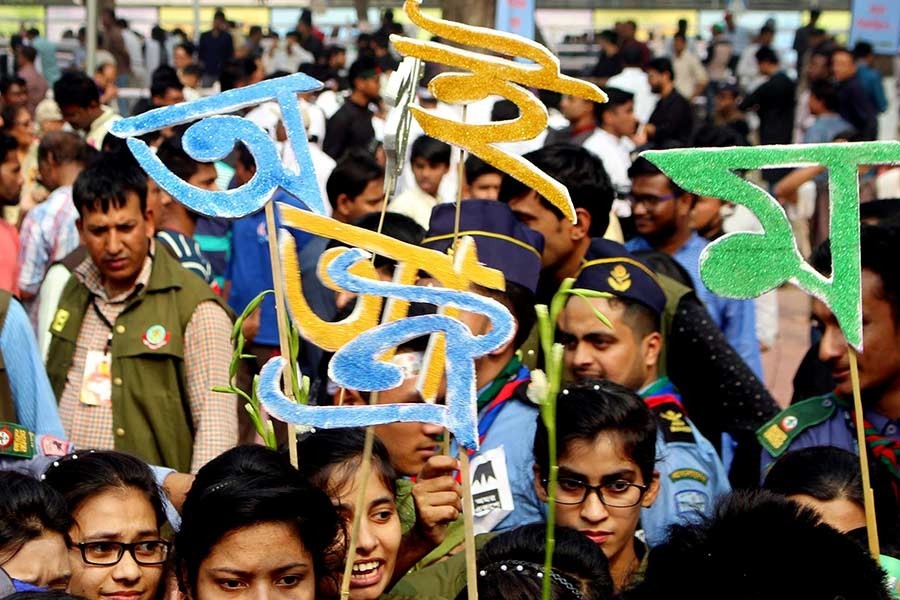The initial reaction of the first-time tourists from the neighbouring Indian state of West Bengal to the looks of Dhaka once was their great amazement at the shop and office signboards. Long used to these signboards in English or Hindi in Kolkata, they couldn't believe their eyes finding them in Dhaka in pure Bangla. In Kolkata billboards, Bangla, however, is not bypassed altogether. The language finds its place, alongside the bold letters in English, in a negligent manner. Thanks to this, people from West Bengal would feel thrilled at seeing Bangla, also their mother-tongue, so greatly honoured. They indisputably share the love and respect Bangladeshis have for their state language.
The case for Bangla is a highly sensitive issue in Bangladesh. Newspaper reports about the recent action of Dhaka North City Corporation (DNCC) authorities against several business establishments for not using Bangla in their signboards emerge with three features: i) the new West Bengal tourists may greatly miss the thrill of the earlier Indian visitors, ii) with none to monitor the slow disappearance of Bangla, signboards not using the language have long become a common sight in Dhaka and iii) punitive actions against the dishonour shown to Bangla ought to have been taken long ago.
The campaign of DNCC has been prompted by a High Court Bench order issued on February 17, 2014. It asked the government to take action against the establishments not using Bangla in their signboards, number plates of automobiles, names of government offices etc. The DNCC campaign conducted by its mobile court on January 23 was a follow-up to the HC order and the consequent DNCC circular in this regard. In the recent campaign, the mobile court identified several errant establishments in the Banani area and slapped fines on them.
The drive will undoubtedly elicit praise of the patriotic citizens. But to what extent it will become a nationwide campaign on honouring Bangla remains shrouded in uncertainty. A pertinent question at this point is the great Language Movement Day comes and goes every year. Throughout February, seminars, symposiums etc become emotion-charged and highly vocal, stressing the greatness of Bangla and its historic role in the country's independence. But few seem to be taking serious notice of the marginalisation of Bangla in the public life.
The action taken by DNCC against people for not using Bangla reminds many of the day of the 21st February in 1969. A countrywide mass upsurge against the exploitations of Bengalees by the then Pakistani rulers was then going on in full swing. On that very day, the students and the general people in Dhaka swung into an extraordinary action. With no leaders around to guide or encourage them, the demonstrators in a procession in the late morning erupted suddenly in a volcanic force. It was a spontaneous outburst. In a lighting speed, the agitators began venting their pent-up anger on the shops' English and Urdu signboards and cars' number-plates. The 'battlefront' was the then Jinnah Avenue (now Bangabandhu Avenue) and the nearby areas. Hundreds of upscale shops, business houses and cars were attacked with stones, making the owners promise to use Bangla signboards from the next day. In fact, it was from that day that pure Bangla signboards became a noticeable site in Dhaka.
The seeds of the country's War of Independence had been sown during the 1952 Language Movement. The Bangla language and its use worked as the premier impetus in the 9-month Liberation War. After independence Bangla was given the status of the nation's state language. Few languages go through such phases of turbulence. Against this epic backdrop of Bangla, prodding the nation into using it with due honour is indeed sad.


